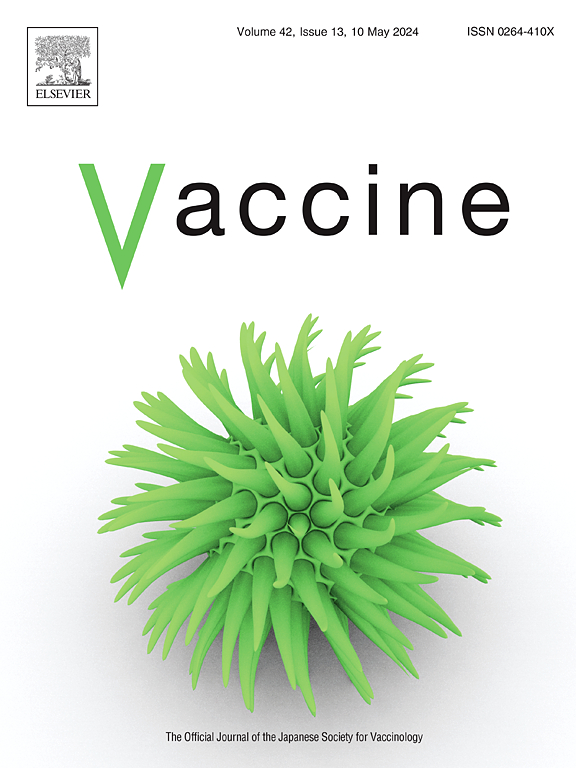Chimeric designs of rabies virus glycoprotein G enhance baculovirus pseudotyping and immunogenicity in mice: influence of the transmembrane domain and a flexible linker
IF 4.5
3区 医学
Q2 IMMUNOLOGY
引用次数: 0
Abstract
Rabies remains a lethal zoonotic disease, affecting approximately 50,000 people annually, underscoring the need for new and cost-effective vaccines capable of elicit robust immunity. Baculoviruses have emerged as promising vaccine vectors due to their ability to display antigens on their surface, making pseudotyping with rabies virus glycoprotein G (gG) a viable strategy for vaccine development. However, strategies to optimize baculovirus pseudotyping remain underexplored. In this study, we evaluated three chimeric gG designs and found that fusion to the gp64 transmembrane domain via a flexible linker significantly enhanced both baculovirus pseudotyping and the resulting immune response. The chimeras consisted of the gG ectodomain fused to the gp64 transmembrane domain either directly (gG-AN) or via a flexible linker (gG-FL), along with a variant retaining its native transmembrane domain (gG-TM). Notably, baculoviruses pseudotyped with gG-FL and gG-AN achieved the highest levels of gG incorporation into viral particles, while gG-TM impaired baculovirus replication. All pseudotyped baculoviruses elicited neutralizing antibodies against rabies virus; however, gG-FL induced the strongest immune response, as evidenced by full activation of bone marrow-derived dendritic cell markers, higher neutralizing antibody titers, and increased IFN-γ production. This enhanced immunogenicity correlated with greater protection following rabies virus challenge, with gG-FL baculovirus-immunized mice achieving the highest survival rates. Moreover, an adjuvanted gG-FL formulation showed an immunological potency of 4.65 IU/dose. These findings highlight the importance of transmembrane domain selection and flexible linker incorporation in optimizing baculovirus pseudotyping with gG and enhancing its immunogenicity against rabies virus. This strategy could inform the design of future baculovirus-based vaccines.
狂犬病毒糖蛋白G嵌合设计增强小鼠杆状病毒假型和免疫原性:跨膜结构域和柔性连接体的影响
狂犬病仍然是一种致命的人畜共患疾病,每年影响约5万人,这突出表明需要能够产生强大免疫力的具有成本效益的新型疫苗。杆状病毒由于能够在其表面显示抗原而成为很有前景的疫苗载体,这使得用狂犬病毒糖蛋白G (gG)进行假分型成为疫苗开发的可行策略。然而,优化杆状病毒假分型的策略仍未得到充分探索。在这项研究中,我们评估了三种嵌合gG设计,发现通过柔性连接物与gp64跨膜结构域融合显著增强了杆状病毒假型和由此产生的免疫反应。嵌合体包括gG外结构域直接(gG- an)或通过柔性连接体(gG- fl)与gp64跨膜结构域融合,以及保留其天然跨膜结构域(gG- tm)的变体。值得注意的是,以gG- fl和gG- an为假型的杆状病毒在病毒颗粒中获得了最高水平的gG结合,而gG- tm则破坏了杆状病毒的复制。所有假型杆状病毒均诱发抗狂犬病毒的中和抗体;然而,gG-FL诱导了最强的免疫反应,这可以通过骨髓来源的树突状细胞标记物的完全激活、更高的中和抗体滴度和增加的IFN-γ产生来证明。这种增强的免疫原性与狂犬病毒攻击后更强的保护相关,gG-FL杆状病毒免疫的小鼠获得最高的存活率。此外,佐剂gG-FL制剂的免疫效力为4.65 IU/剂量。这些发现强调了跨膜结构域选择和柔性连接体结合在优化gG杆状病毒假型和增强其抗狂犬病毒免疫原性中的重要性。这一策略可以为未来基于杆状病毒的疫苗的设计提供信息。
本文章由计算机程序翻译,如有差异,请以英文原文为准。
求助全文
约1分钟内获得全文
求助全文
来源期刊

Vaccine
医学-免疫学
CiteScore
8.70
自引率
5.50%
发文量
992
审稿时长
131 days
期刊介绍:
Vaccine is unique in publishing the highest quality science across all disciplines relevant to the field of vaccinology - all original article submissions across basic and clinical research, vaccine manufacturing, history, public policy, behavioral science and ethics, social sciences, safety, and many other related areas are welcomed. The submission categories as given in the Guide for Authors indicate where we receive the most papers. Papers outside these major areas are also welcome and authors are encouraged to contact us with specific questions.
 求助内容:
求助内容: 应助结果提醒方式:
应助结果提醒方式:


